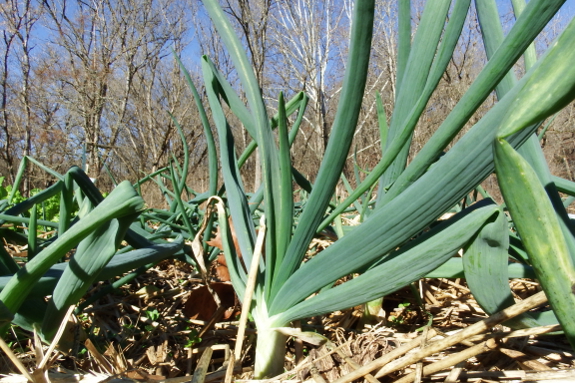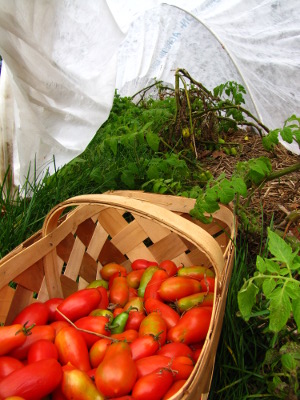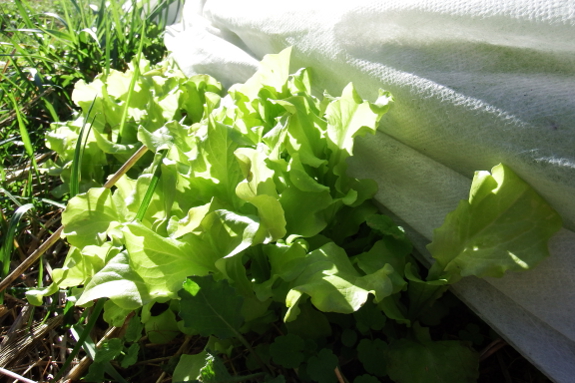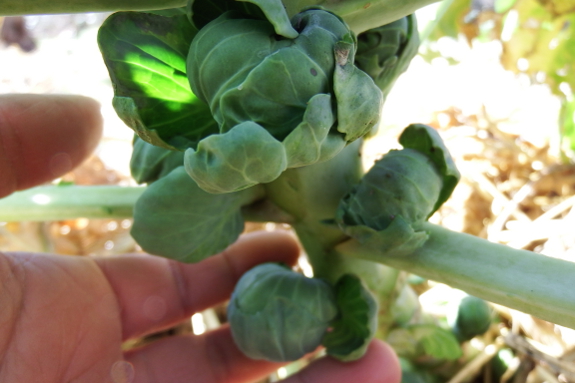
When should I cover fall crops?

 The great thing about row-cover fabric is that it's breathable, so you can
cover crops even when you're enjoying beautiful sunny days. But there
are always so many tasks involved in putting the garden to bed for the
winter that I tend to wait to erect our quick hoops until we absolutely have to. But when exactly is that?
The great thing about row-cover fabric is that it's breathable, so you can
cover crops even when you're enjoying beautiful sunny days. But there
are always so many tasks involved in putting the garden to bed for the
winter that I tend to wait to erect our quick hoops until we absolutely have to. But when exactly is that?
The first time to
consider erecting quick hoops is just prior to your first frost. If the
forecast says you might get a light freeze followed by a week or more of
summer weather, it's often worth protecting at least a few tomatoes
and peppers in hopes of extending the harvest. Sometimes you get lucky
and can eke out summer crops this way until Thanksgiving! But for the
last several years, our first frosts have been killing frosts --- down
into the mid twenties. At that temperature, a row cover isn't enough to
protect tropical vegetables, so I don't even try to cover them up.

The next most sensitive
crop is baby lettuce. While most fall vegetables require planting so
early that they're mature and hearty by frost time, leaf lettuce can be
eaten as little as month after planting. So I seed our last bed in early
October, then protect those seedlings during even the lightest freezes.
As you can see in the photo above, I'm sometimes lazy and simply lay a
piece of row-cover fabric over this baby-lettuce bed, turning it into a
quick hoop later when the other leafy greens need protection too.
Which brings me to the
main event --- erecting the quick hoops that allow us to eat leafy
greens all winter some years. In this case, it's not so much a single
hard freeze that will harm your crops as extended cold weather. For
example, Friday night dropped down to 21, but I only saw very minor
damage on a few uncovered lettuce leaves and no other harm in the winter
garden. On the other hand, once we begin to see freezes every night,
it's time to cover up the older lettuce, the kale, and any other leafy
greens you want to be harvesting after the winter solstice. I'll
probably put up our quick hoops this week just to be on the safe side.

How about brussels
sprouts? In the past, we haven't covered these plants at all since my
goal is for the plants to produce through November and December and then
be eaten up when deep freezes hit in January and February. Some of our
plants are running behind schedule this year, though, so I might cover
them up and see if we can extend the season. That's where Mark's tipi-tunnel experiment will come into play.
The fall garden produces so much bounty for so little work that I
consider it low-hanging fruit...as long as you get the timing right. So
mark your calendars now --- start planting leafy greens in August, cover
them in October or November, and your winter meals will look 100%
brighter all winter long.
Want more in-depth information? Browse through our books.
Or explore more posts by date or by subject.
About us: Anna Hess and Mark Hamilton spent over a decade living self-sufficiently in the mountains of Virginia before moving north to start over from scratch in the foothills of Ohio. They've experimented with permaculture, no-till gardening, trailersteading, home-based microbusinesses and much more, writing about their adventures in both blogs and books.
Want to be notified when new comments are posted on this page? Click on the RSS button after you add a comment to subscribe to the comment feed, or simply check the box beside "email replies to me" while writing your comment.
